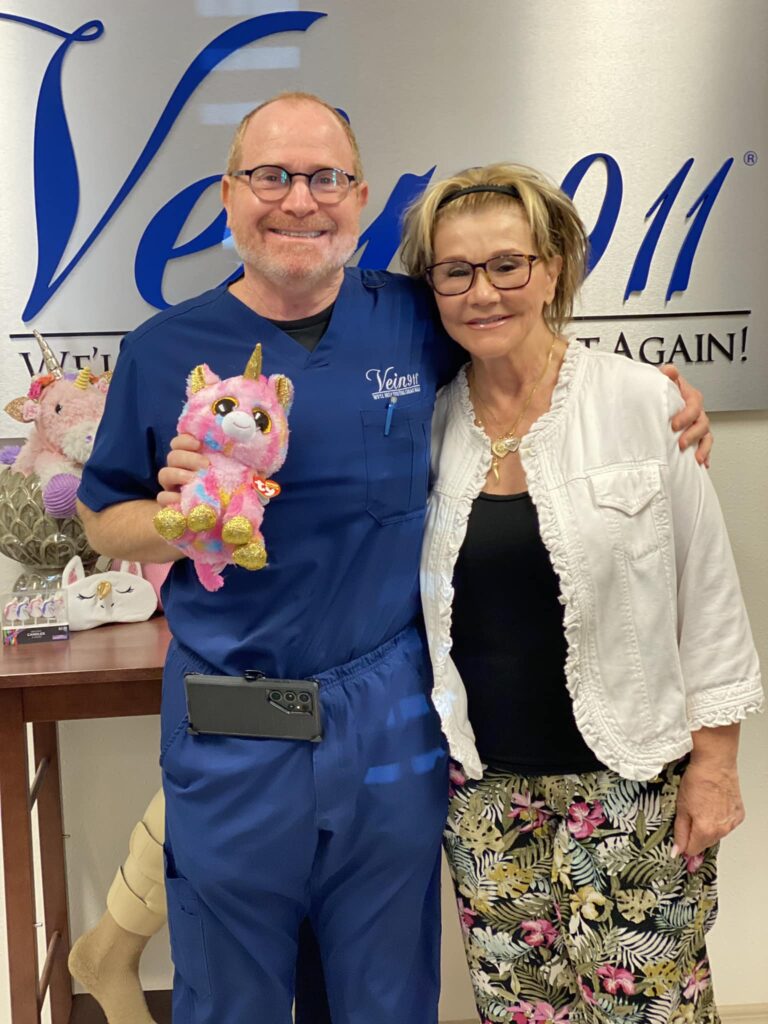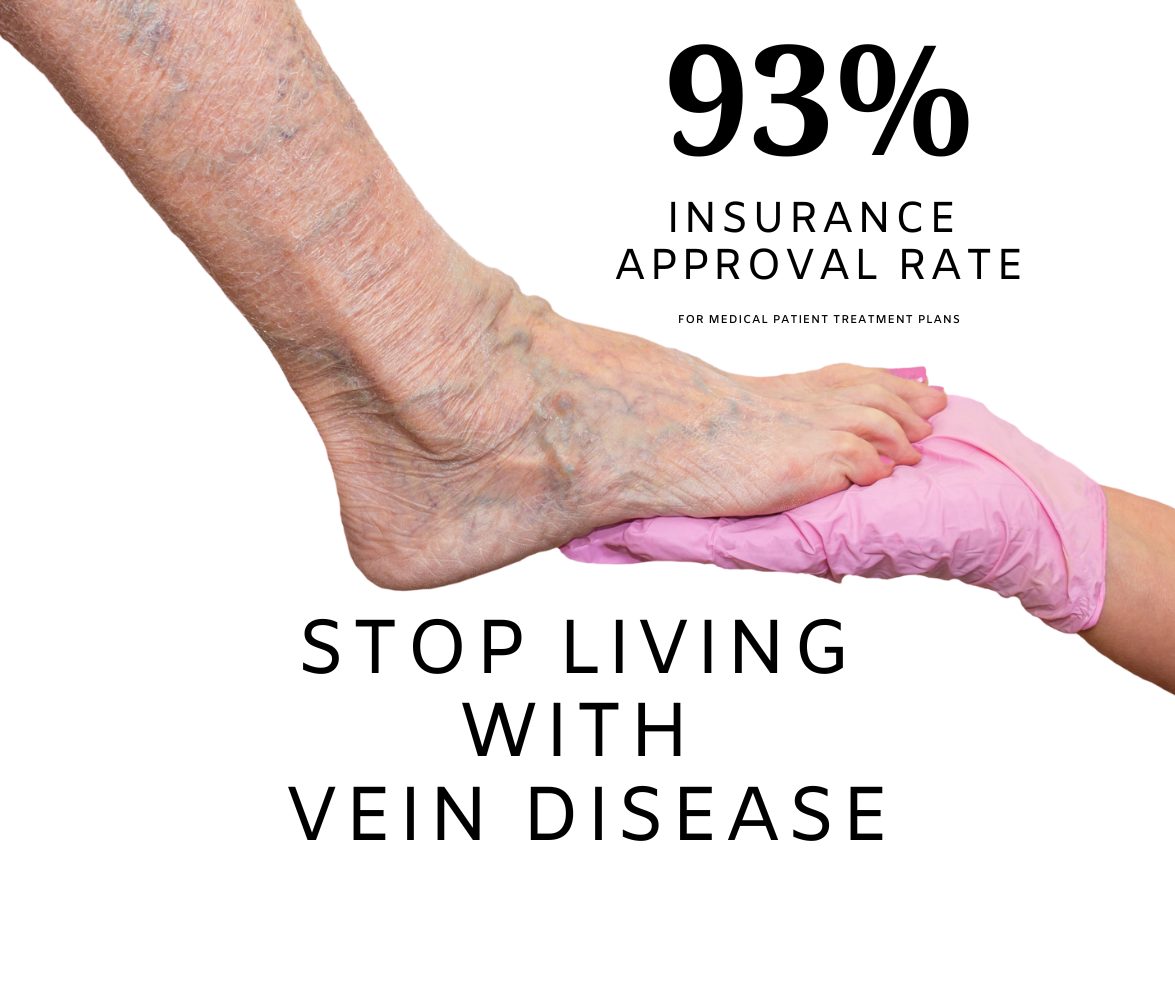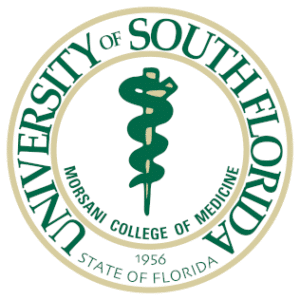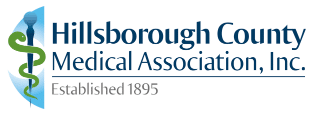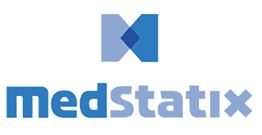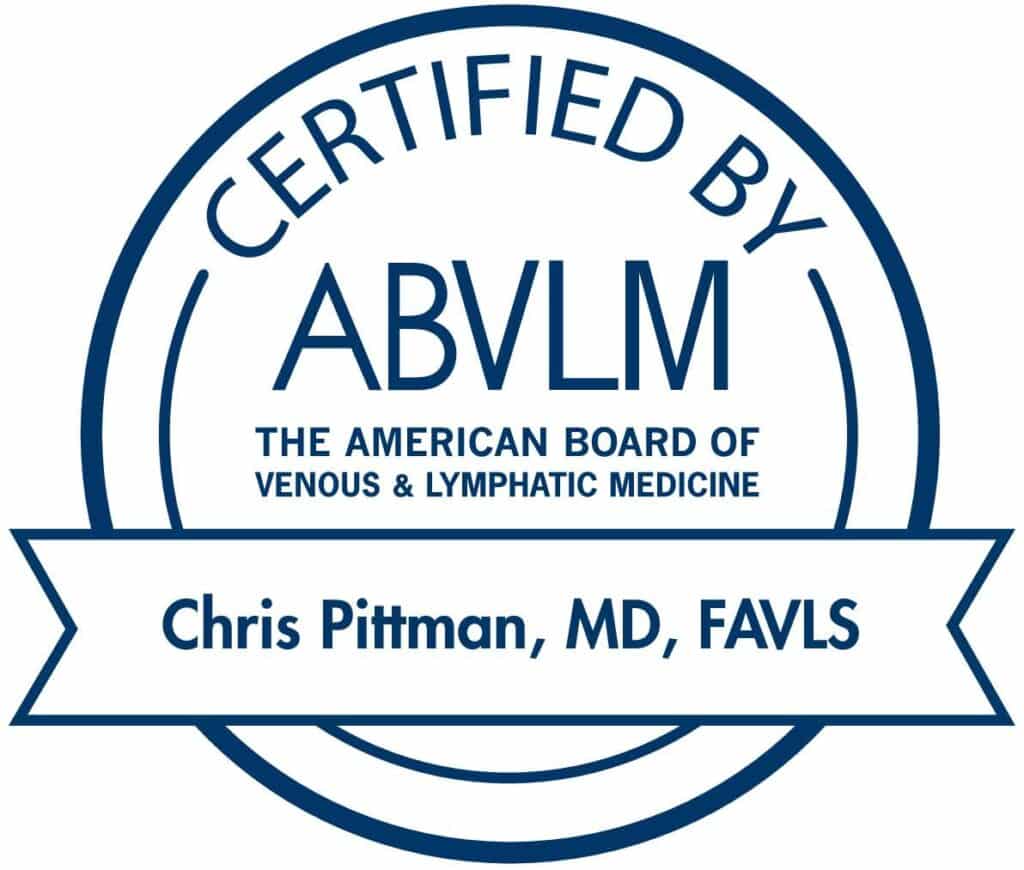Spider veins are enlarged, non-bulging veins on the skin surface that appear purple, red, or blue. They are unsightly and commonly found on the legs, though they can also appear on your face and other parts of the body. Spider veins are much more common than varicose veins and often co-exist with varicose veins.
Spider vein disease is typically a cosmetic issue, but if you also have vein disease symptoms a vein ultrasound exam is usually recommended to properly treat your vein problem. If you have symptoms, then an ultrasound exam is almost always covered by your insurance.
Learn more about Spider Veins here.
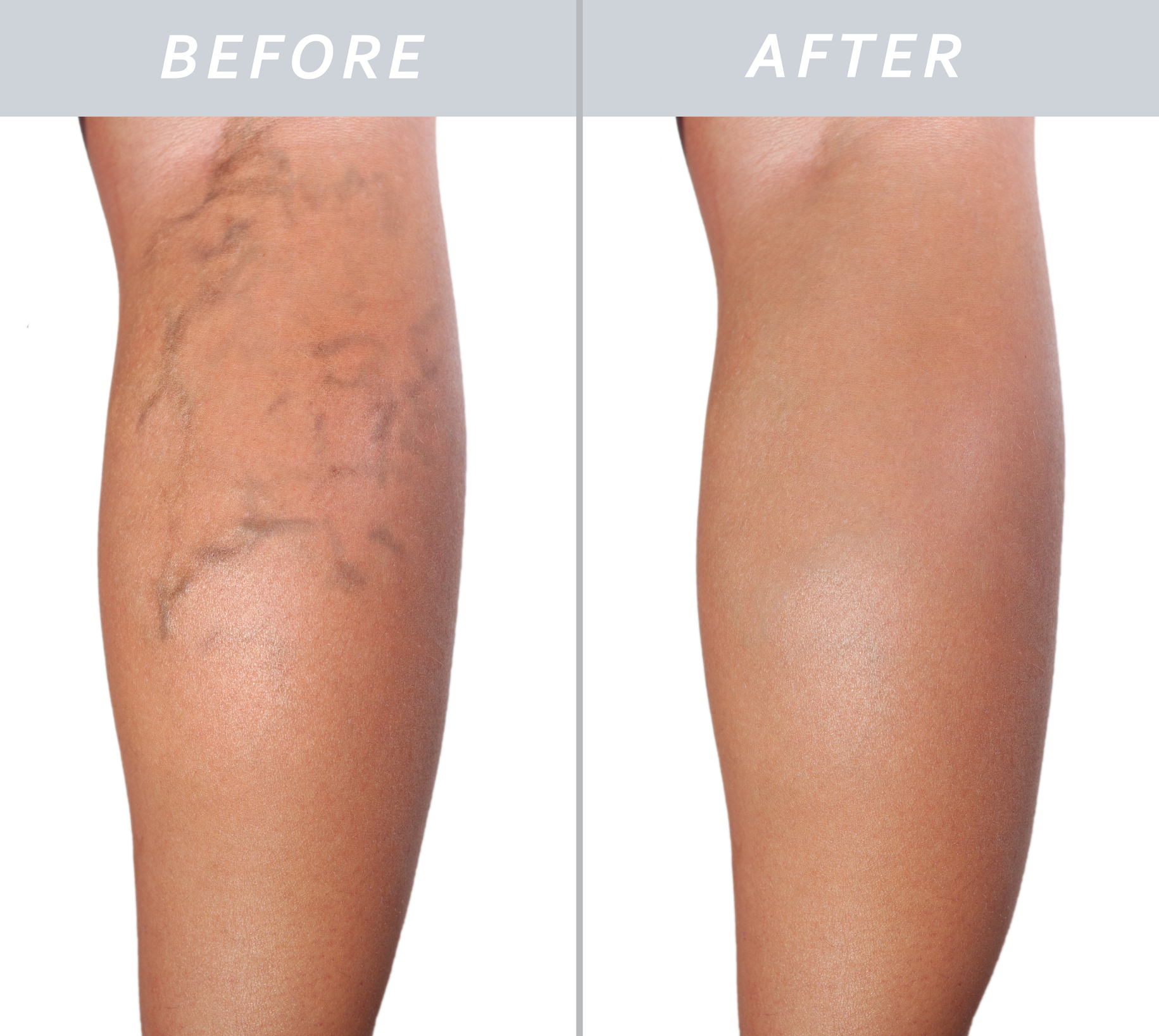
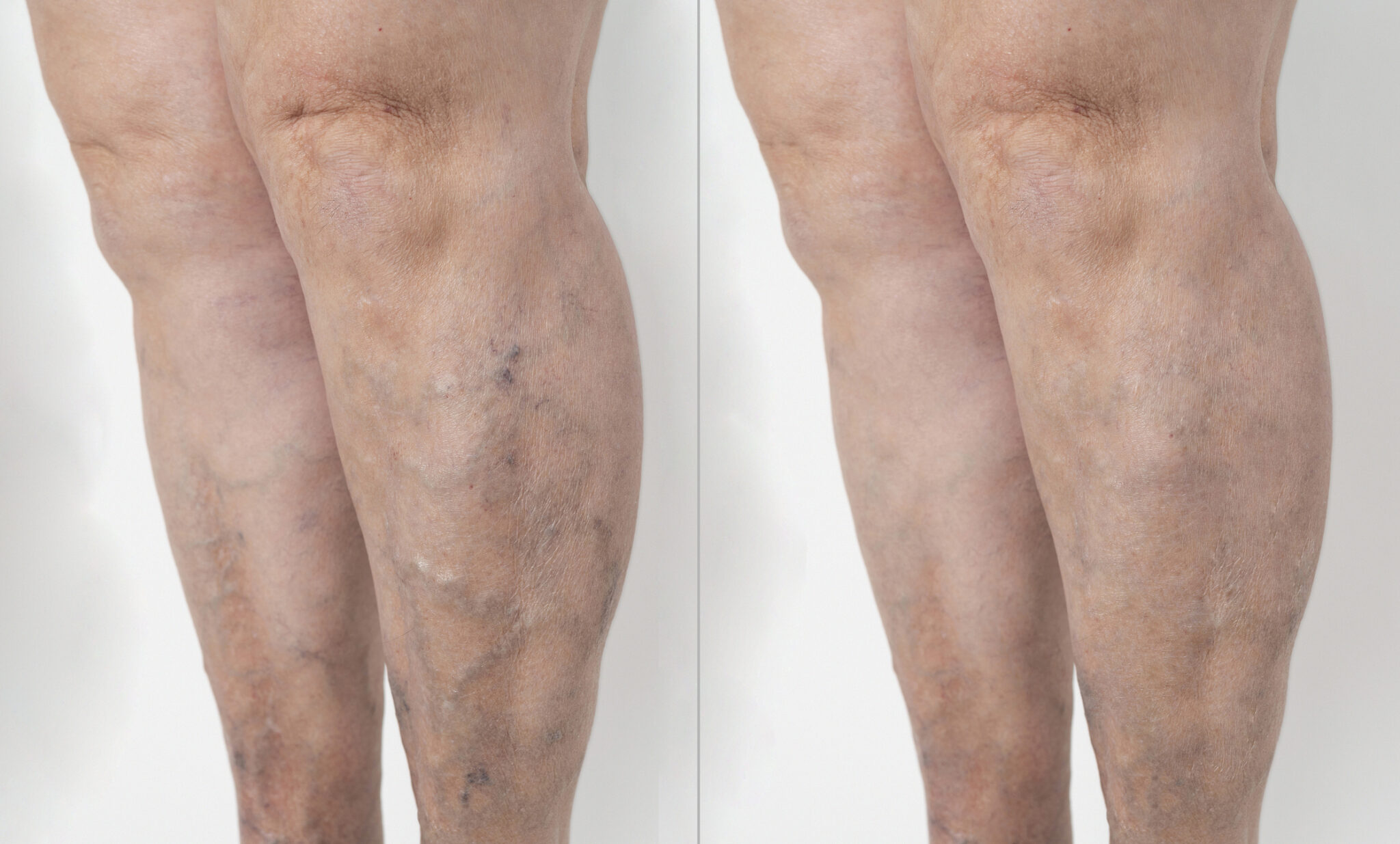
Ask these questions when selecting your vein care physician:
The heart pumps blood containing oxygen and nutrients to the entire body through our arteries. Veins then carry the blood from the body back to the heart. As your calf muscles contract, they push blood back to the heart from your lower body against the flow of gravity.
Veins have valves that act as one-way flaps to prevent your blood from flowing backwards as it moves up your legs. If the valves become weak, blood can leak back into the veins and collect there — this problem is called venous insufficiency.
Over time, this backed-up blood enlarges veins under your skin and they become varicose veins visible to the eye.
Varicose veins often cause leg symptoms, such as:
Spider veins associated with leg symptoms may indicate that larger veins are leaking under the skin surface. These hidden leaking veins can be identified using a diagnostic ultrasound machine.
Varicose veins commonly produce symptoms such as pain, swelling and restless legs and put you at risk for blood clot formation in your leg veins.Superficial venous thrombosis or varicose vein blood clots are painful and may take weeks to resolve.
Blood clots in deep veins of the leg pose a more serious health risk including risk of pulmonary embolism where clots in the legs break off and float to the lungs causing shortness of breath and sometimes death.
Skin breakdown or ulcers may occur with more advanced varicose venous disease.
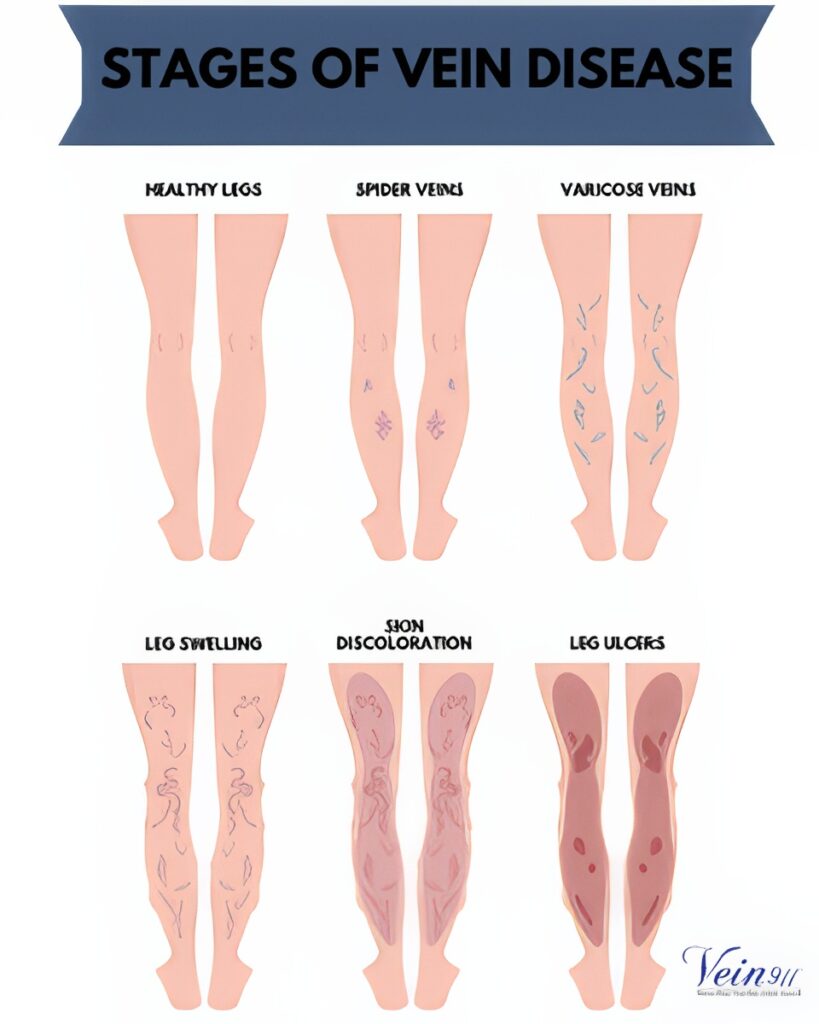
Many clients want to know what kind of vein treatment medications are used during their vein treatment procedures and if they’re FDA approved products. At Vein911, only FDA approved medications are used to treat your spider veins and varicose veins.
Ask your vein care physician if they use FDA approved medications or if they use products made in a compounding pharmacy. Many vein care practitioners use compounded medications to increase profit. Below is a quote from the FDA:
“Pharmacy compounding is an age-old practice in which pharmacists combine, mix, or alter ingredients to create unique medications that meet specific needs of individual patients. It’s also a practice that is under FDA scrutiny—mainly because of instances where compounded drugs have endangered public health. In its traditional form, pharmacy compounding is a vital service that helps many people, including those who are allergic to inactive ingredients in FDA-approved medicines. But consumers need to be aware that compounded drugs are not FDA-approved. This means that FDA has not verified their safety and effectiveness. Poor practices on the part of drug compounders can result in contamination or in products that don’t possess the strength, quality, and purity required.”
The FDA does not approve compounded medications.
Treatment usually only takes 30 minutes per leg. Dr. Pittman likes to say “If we are still friends after the first leg, we will move on to the second leg”. Only one leg is treated at a time. Once the first leg is fully treated, a second appointment will be scheduled to complete the other leg.
Typically vein treatment consists of the following:

